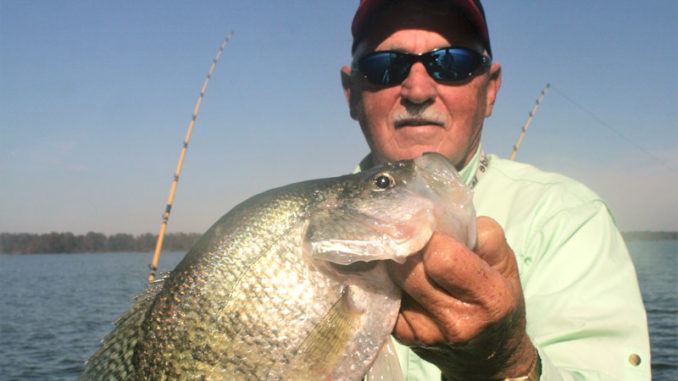
Summer patterns are very predictable on Santee Cooper
Most fish in the Santee Cooper lakes are solidly entrenched into summer fishing patterns by July. But that’s not a bad thing. Summer patterns are often predictable if you understand the requirements of the species you’re targeting.
And it’s certainly not all about deep water. Plenty of excellent fishing occurs in reasonably shallow water. You just have to look for the right species in the right places.
Summer bass fishing is still a shallow-water situation on both Lake Marion and Lake Moultrie. But savvy anglers have learned to target the combination of slightly deeper water and thick cover. Especially during mid-day.
Most bass guides work shallow flats with scattered woody or weedy cover early and late in the day. They primarily use Chatterbaits, spinnerbaits and noisy topwater lures to attract feeding fish. But after a brief flurry of action in the morning, guide Inky Davis said a more methodical approach works best.
“Most of the bass in both lakes will be holding on or near shallow-water cover. But in some sections of the lake, we find some of the best shallow-water cover far from the shoreline,” Davis said. “I fish the upper end of Lake Marion a lot during mid-summer. Some areas between Jack’s Creek and Pack’s Landing have outstanding bass fishing far from the shoreline.
Davis (803-478-7289) also said working shoreline cover — trees, weeds, stumps and logs in shallow water — can be excellent.
Shallow and deep
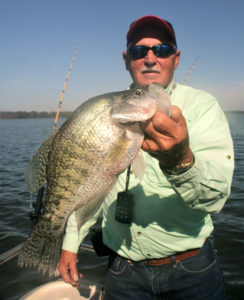
“My primary targets are usually 3 to 6 feet deep but are near deeper water often 7 to 10 feet deep,” he said. “This combination of cover near deep water is a key to consistent summer action. The most-consistent time for huge fish is earlier in the year. But we still catch plenty of big bass during the summer.”
“Watch for forage fish activity on the flats at first light for clues as to where the bass are holding,” he said. “Bass are going to be near a good food source. So when I’m out at dawn, I’ll check these areas. And if I don’t see forage, I’ll make a quick move or two until I find it.”
Deep slabs
Crappie fishing during the summer is primarily a deep-water affair. And most fish are caught on natural cover in deep water or around man-made fish attractors consisting of sunken brush around drops and humps.
Dave Hilton, a long-time crappie guide, said the heat can be harsh. But it does keep the crappies in fairly predictable patterns on the Santee Cooper lakes.
“Summer crappie fishing for me is all about working deep brush using live minnows, usually in the 15- to 25-foot range,” Hilton said. “Plus, I’m mobile in terms of where I fish. I try to not get locked into simply fishing the same type places every day. Crappies are going to move around as the forage moves. So when I’m graphing a specific underwater brush pile target, I’m looking for crappie, and baitfish.”
Hilton (843-870-4734) prefers tight-lining minnows with long poles. And he said getting the exact depth right, and continuing to fish the right depth, is the difference to catching limits of crappie or just enough for supper.
Moving-water catfish
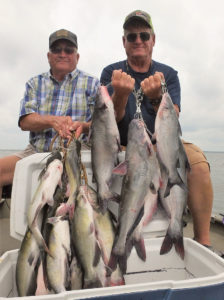
Catfish action can be outstanding during August, and the Diversion Canal is an excellent place to find blues, flatheads and channel catfish.
The key to this fishing is the current flow through the 7-mile canal, because current attracts forage that catfish prefer.
Kevin Davis, owner of Blacks Camp, said daytime fishing in the canal is typically done by drifting with the current flow.
“For the most fish, it’s best to use a rod about 6- to 7-feet long, and use a heavy sinker, often 2 ounces or more, to get the bait to the bottom,” he said. “Using a heavy weight enables fishermen to keep the line near vertical while drifting, important for detecting bites and avoiding snags. The basic rig consists of a sinker placed at the terminal end of the line with a leader and hook about 12 to 18 inches above it.
Davis (843-312-3080) said to fish just off the bottom and occasionally let the sinker tap the bottom to ensure your bait stays close to it.
“If you simply drop it down and drag it along the bottom, you’ll likely get snagged and lose your rig,” he said.
“A variety of baits work well and fishermen using small cut bait, night crawlers or minnows will usually catch plenty of fish, often mostly channel catfish and smaller blue catfish,” he said. “For larger fish, I recommend 6/0 to 8/0 circle hooks, 50-pound line and heavy action rods. Cut shad, herring, bream and white perch are all excellent baits.”


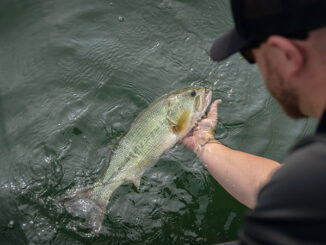
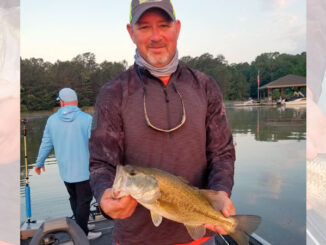

Be the first to comment